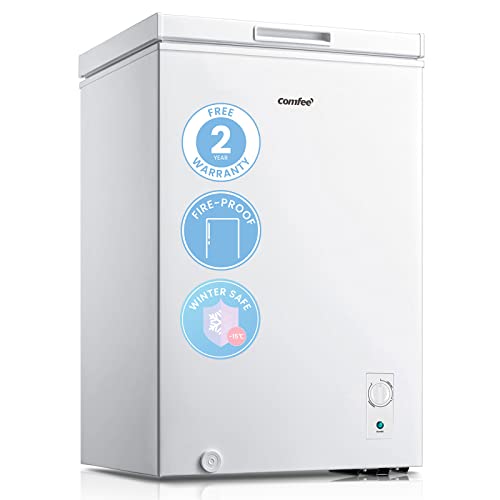The No. Question That Everyone In Fridges Must Know How To Answer
페이지 정보
작성자Drew 댓글댓글 0건 조회조회 64회 작성일 24-02-10 11:54본문
 How to Keep Your Fridge Running Smoothly
How to Keep Your Fridge Running SmoothlyRefrigerators are available in different sizes and shapes. They can be tucked away in tight spaces, such as dorm rooms.
Some models also sync with smart devices. You can monitor your fridge remotely and fix any issues if they arise. You can also control them using voice commands.
Noise
Refrigerators can produce various sounds when running, some of which are more prominent than others. If you notice any of the noises below, determine its origin and look for a quick fix before calling a repair service for your fridge.
Rattling
Fridge rattling can occur when there's not enough space between the fridge and the wall or cabinet, or when it's placed at an uneven angle. It's simple to repair. You just need to make sure there are at least two inches between the fridge and wall or cabinet, or adjust the leveling screws or legs to raise or lower your fridge.
Hissing
The compressor may hiss when cooling your food. This is a normal sound, and it's caused by the compressor oil or the flow of refrigerant through the system. If you're worried, count how often the compressor is running and contact a refrigerator repair service immediately in the event that it occurs more often than normal.
Squeaking
Fridges can be noisy when the fan or coils are filthy. If you notice your fridge making a squeaking sound clean the coils or fan with a vacuum cleaner using a brush attachment or a rag and water, or simply use dish soap and water. It is important to clean the fridge for sale at least twice a year and more frequently when your fridge is old or used heavily.
Clicking
A click sound can be heard from a fridge. It is usually due to ice around the freezer fan. This can be solved with a manual defrost, but it is likely to recur until the issue is resolved by a service expert.
It can also happen when the fridge is shut off, so make sure to restart it if this occurs. If you have an ice maker installed, this sound can be caused by it. Be sure to turn it off when you are not making use of ice frequently.
The hum of your fridge is normal, and it may be more pronounced at certain times of the day, or following large quantities of stock or freezing functions. This is because the refrigerator has to work harder and faster in order to keep your food cool but it's not a sign of a problem with the refrigerator or its performance.
Dust
Household dust attracts dirt, bacteria, and other microorganisms and traces of daily exposures to chemicals in the home. The tiny particles can trigger allergic reactions and respiratory irritation and provide a perfect surface for microbes, such as those that may cause infection when they come into contact with a cut.
Cleaning a refrigerator isn't easy but regular cleaning can help reduce dust and maintain a more constant temperature. A dirty fridge also wastes energy because it overheats and is inefficient. If your fridge freezers for sale is making more noise than normal or when you suspect it's wasting energy by overworking it might be time to get it checked out.
Dust doesn't drift into the air from outside as is often believed. It is made up of soil that has been resuspended from the home that is often contaminated with lead and other toxicants, as well as pollen, mold spores and car exhaust. It also contains legacy pollutants such as DDT which were banned more than half a century ago.
Certain compounds, such as flame retardants such as decabromodiphenylether can be dissolved and released into the air, however the majority of chemicals found in dust in the house are transferred directly from one object to the next for example, by throwing fibers and tiny bits of plastic off of electronic equipment. High-molecular-weight substances, such as surfactants used in cleaners and paint strippers, also migrate directly into dust.
A dirty refrigerator can adversely affect your health, as well as contaminating food. It can contain allergens like pet dander and the droppings of cockroaches, which can trigger asthma and allergies for many people. It also contains bacteria spores, such as staphylococcus.
Researchers have discovered that dust contamination can be linked to a broad range of health conditions, including cardiovascular disease, cancer, uk leukemia and inflammatory intestinal disease. Recent research revealed that dust in the homes of children who had leukemia contained higher levels of PCBs, PBDEs, and polycyclic aromatic hydrocarbons.
Condenser Coils
If refrigerators are operating correctly, the coils on the back and gefi.io front of the appliance should dissipate the heat produced by the compressor. However, when these radiator-like components are covered with pet hair, dust, or lint, the compressor will work overtime trying to cool the fridge and will eventually wear down the unit. This is why it's crucial to clean the coils regularly.
Before you begin, unplug and shut off the refrigerator's power supply. This can lower the risk of electrocuting yourself and your family members when working on the appliance. If you are allergic to dust it is a good idea for you to wear a face mask. Then you will need to find the coils. They are usually located on the back of the fridge, macphearson.org or in front of the base of some models. If you're unsure of where to look, consult your fridge's owner manual or contact the manufacturer for more details.
Once you've located the coils, take down the access panel (if there's one) and alternate between vacuuming them using the hose attachment that is narrow or brushing them using a condenser cleaning brush. Be careful not to risk damaging or twisting the coils. Replace the kick panel, or put the refrigerator in place, and plug it in.
If you're not confident doing it yourself, you can always hire an expert. But it's much cheaper and less hassle to keep up with the cleaning routine to stop the problem from happening in the first place.
Maintenance
Fridges are hard-working appliances that run all day and night to cool your food. They need regular maintenance to ensure they perform their job well. This simple preventive maintenance can ensure that they are running smoothly for many years to come.
A simple task is to clean the door seals. Gaskets can get clogged with jelly and other sticky foods which allows air to escape through tiny openings. Every few months, clean them clean using a baking soda solution and warm water with the toothbrush or sponge.
Another spot to look for issues is the fan at the back of the refrigerator. It can become noisy when it's clogged with paper, insulation or even mice (gasp). Unplug the refrigerator, take out all the shelves and remove any removable parts. Vacuum cleaners that have connections for hoses are a great option to clean the coils as well as the area around them. Make sure to turn off the fridge back on when you're finished.
It is recommended that you read the owner's manual for details about where to locate the coils, the fan and the tools to clean it with. It's also a good idea to read the warranty thoroughly to make sure you know what is and isn't covered.

댓글목록
등록된 댓글이 없습니다.
